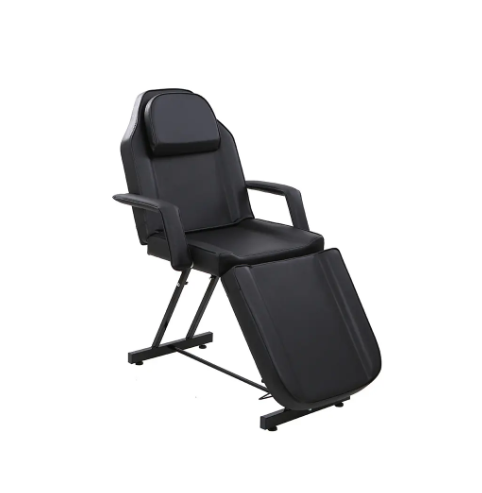Why Balancing Function and Energy-Saving Matters for Salon Equipment
Let’s start with the “why”—because picking salon equipment that’s only functional or only energy-saving misses the mark. Think about a salon’s monthly bills: electricity costs add up fast, especially with equipment running all day (hair dryers, styling irons, lighting). If you buy super cheap, energy-saving equipment that breaks after 3 months or can’t handle busy days, you’ll end up replacing it often—wasting money and time. On the flip side, a high-powered hair dryer that dries hair fast but guzzles electricity will jack up your utility bills month after month.
Balanced salon equipment gives you the best of both worlds: it works well enough to keep stylists efficient and clients happy, while also cutting down on energy costs. Over time, that adds up to big savings—money you can put back into your salon (like new decor or staff training). Plus, energy-saving equipment is often more durable, so you won’t have to replace it as often. It’s not just about saving cash; it’s about running a smart, sustainable salon that’s good for your budget and the environment.
Check Energy Labels: First Step for Energy-Saving Salon Equipment
The easiest way to spot energy-saving salon equipment is to look for energy efficiency labels. Most countries have standard labels—like the Energy Star in the US or EU Energy Label in Europe—that rate equipment from A (most efficient) to G (least efficient). For example, a hair dryer with an A rating uses way less electricity than a C-rated one, but still dries hair just as fast. Don’t skip this step! A lot of equipment looks similar on the outside, but their energy use can vary by 30% or more.
But here’s the catch: don’t just pick the highest-rated label and call it a day. Make sure the equipment still meets your functional needs. For example, an A-rated hair straightener is great—but if it takes 10 minutes to heat up (when you need it to be ready in 2), it’ll slow down stylists. So, use the energy label as a starting point, then check if the equipment’s speed, power, and features match what your salon actually uses. It’s about finding that sweet spot between “saves energy” and “works well.”
Prioritize Core Functions: Don’t Sacrifice Performance for Energy-Saving
When selecting salon equipment, it’s easy to get distracted by “energy-saving” claims and forget about what you actually need. Let’s break it down by equipment type. For hair dryers: the core function is fast, even drying. Look for ones with adjustable heat settings (so stylists can use lower heat for fine hair, saving energy) and a powerful motor that doesn’t take forever to dry thick hair. For lighting: you need bright, natural-looking light so stylists can see hair color and details clearly. LED lights are energy-saving, but make sure they’re not too cool or too warm—opt for 4000K-5000K (neutral white) to avoid color distortion.
For washing stations: the faucet should have a low-flow option (to save water, which cuts down on water heating costs) but still have enough pressure to rinse shampoo out quickly. The key rule here is: list your non-negotiable functions first, then find salon equipment that checks those boxes and has good energy-saving features. You don’t want to end up with a “green” hair dryer that can’t handle thick hair, or a low-flow faucet that makes clients wait 5 minutes to rinse out conditioner.
Consider Long-Term Use: Durability & Maintenance for Salon Equipment
Balancing function and energy-saving isn’t just about the first purchase—it’s about long-term use. A cheap, energy-saving hair iron might save you $20 upfront, but if it breaks in 6 months and you have to buy a new one, you’ll end up spending more than if you’d bought a slightly more expensive, durable model. Look for salon equipment with strong warranties (1-2 years is good) and easy-to-find replacement parts. For example, a hair dryer with a removable filter is easier to clean—this keeps it running efficiently (saving energy) and extends its life.
Also, think about maintenance. Some energy-saving equipment needs regular upkeep (like cleaning filters or checking cords) to stay efficient. If you skip maintenance, even the best equipment will use more energy over time. Train your staff to take care of the equipment: clean hair out of dryers after each use, turn off lights in unused areas, and don’t leave styling tools plugged in when not in use. This small step keeps your salon equipment working well and saving energy for years.
Conclusion
So, how do you select salon equipment that balances functionality and energy-saving performance? Start by checking energy labels to narrow down efficient options, then prioritize your salon’s core functions to avoid sacrificing performance. Next, look for durable, easy-to-maintain equipment to ensure long-term savings. It’s not about picking the “most energy-saving” or “most powerful” option—it’s about finding the one that works for your daily needs and cuts down on costs over time.
Investing in balanced salon equipment pays off in more ways than one: lower utility bills, fewer replacements, happier stylists (who have reliable tools), and satisfied clients (who get quick, quality service). For salon owners looking to run a efficient, budget-friendly business, this approach to selecting salon equipment is a game-changer. It turns a simple purchase into a smart investment that grows with your salon.

